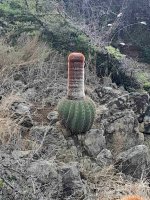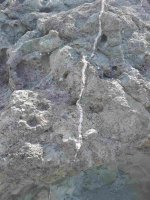You are using an out of date browser. It may not display this or other websites correctly.
You should upgrade or use an alternative browser.
You should upgrade or use an alternative browser.
NEW RULES- Open photo assignment- Share your favorite random pics
- Thread starter Deach69
- Start date
I love you man
longball
'21, '23 COE Winner
Ken Abbis
2022 COE Winner
I love you man
I love you too
Do you have a purdy mouth?
Asking for a friend.
pleased420
Well-known member
longball
'21, '23 COE Winner
Apollonia, Albania
From the second century BC Apollonia allied itself with the Roman Republic, which maintained a military base there for a time. The city flourished in the Roman period, housing a renowned school of Greek philosophy, rhetoric, and military training which attracted students from across the empire. Augustus, the first Roman emperor, studied at Apollonia in his youth. The city began to decline in the 3rd century AD when its harbor started silting up as a result of an earthquake. It was abandoned in the 4th century AD.
View attachment 82309
The "Monument to Agonothetes" was built in the 2nd century BC and functioned as Apollonia's municipal council meeting building in the Roman era.
View attachment 82310
Lazarat Albania was the place to visit before going to The temple
View attachment 82979
View attachment 82978
And just like The City of Lost Wages, the 'eye in the sky', keeps a watch on us all!
Bunker in the Albanian Alps

Islandgrower
2021 COE Winner
CanaViper
Well-known member
love the fact that you found "just some stuff" , looks like a excellent spot.Just some stuff I found interesting on my little fishing hike this morning
just blaze d a phatty and then saw this pic,
Was wondering what all his buddies were thinking
while he pondered whether to jump or not?
just a thought
/steve
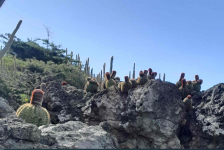
My second home 1968-71. It was there that I saw the Moody Blues, Jethro Tull, The Who, Jeff Beck. Alice Cooper and many others. Tickets were insanely cheap and double domes were $2. Fond memories of bygone days.
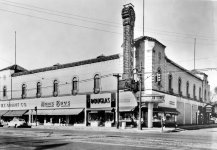
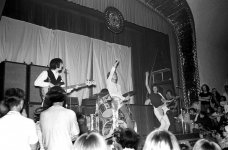
It is a rock 'n' roll mecca...
Designed in 1928 by Charles N. Agree for dance hall entrepreneurs Edward J. Strata and his partner Edward J. Davis, the Grande started off as a place Detroiters would go to dance and listen to jazz and big band sounds, but it would later achieve immortal status in the annals of music history as a rock venue. It is arguably the birthplace of punk and hard-driving rock, where bands like The MC5 and The Stooges cut their chops and became legends...
Kicking out the jams
Russ Gibb, a social studies teacher at Maples Junior High School in Dearborn was a popular local radio DJ at the time. Gibb took a trip out to San Francisco to visit a friend in early 1966 and paid a visit to the storied Fillmore Auditorium and saw The Byrds. When he returned to Detroit, he set out to bring Bill Graham's Fillmore to the Motor City. He scouted out several locations, including the then-closed, since-demolished Gayety Burlesque theater on Cadillac Square downtown and the ballroom of the Statler Hotel on Grand Circus Park, which also has been razed. He settled on the Grande, which was near the neighborhood he grew up in back in the 1940s and entered a rent-to-buy deal with the Kleinman family.
"I remember going down there because my cousin would go dancing there, and we'd pick her up from the Grande," said Gibb, who never went dancing there himself. "I was looking and trying to get a deal and had asked other disc jockeys if they wanted to kick in on the place. They were all doing record hops at the time, and they asked where it was. 'You can't do it down there,' they said, 'that's a black neighborhood.' … Well, kids always want to go where their parents don't want them to go. And I knew location wouldn't mean diddley if the music was there, they'd come. I knew what I saw in San Francisco would work here."
Gibb would reach out into Detroit's beatnik community and meet people like John Sinclair, a "long hair" who had just served a six-month sentence in the Detroit House of Corrections for marijuana possession and columnist for the counterculture newspaper The Fifth Estate. Sinclair would go on to manage The MC5 and become a counter-culture revolutionary, being the key figure in the hippie collaborative Detroit Artists Workshop, later known as Trans-Love Energies Unlimited.
"Russ Gibb went out to San Francisco, saw the first dances at the Avalon and the Fillmore by the Family Dog and Bill Graham Presents, respectively. And he came back to Detroit and thought we should have a place like that here. … He was going to have it be different. It wasn’t going to be like a teen club. It was going to be a place where bands would write their own material and have their own identity. There weren’t going to be any cover bands. There weren’t going to be any bar bands."
Gibb, who would become known as "Uncle Russ," molded the Grande after popular rock halls on the West Coast like the Fillmore and Whiskey A Go-Go. A massive screen hung behind the stage showing light shows and psychedelic water and oil images. The MC5 wound up being like the anchor of the Grande, playing there every week at least once. The band's lead singer, Rob Tyner, introduced Gibb to his friend Gary Grimshaw, who would go on to become a legendary graphic artist, made its concert posters and handbills to promote the shows.
The Grande opened the evening of Oct. 7, 1966, to a crowd of about 60 people turning out to see the Chosen Few and The MC5. Before long, the rock music and the counter-culture environment started luring kids from the suburbs eager to shed the ties and ditch the Brylcreem. The Grande became "the embassy for the suburban youth, whose parents had spirited them out of Detroit forever," Sinclair said. "They kind of thought the shopping malls were kind of lame, you know? They wanted to do something more interesting, so they started coming into the city. … Just as their parents feared, it rubbed off."
While Mrs. Hayes occasionally found herself whispering "to a sweet young thing that her slip is showing," this new incarnation of the Grande would cater to a much different crowd.
"If you went to the Grande Ballroom, somehow somebody turned you on and took you to the Grande Ballroom, you entered a different world," Sinclair said. "It was none like any of the world that they had presented to you before, and there was no interpretive code, you were just thrust into the middle of it. And if you were lucky, Neal would come with a new batch of acid at 10 o’clock on a Friday night and pass it out to the regulars. If you were lucky, you might get one. And by the time you went home – if you went home – you would be in a whole different place mentally, just completely different. So in that way, it was like a gateway into a new and much more interesting and exciting world, which had music at the core of it, and art and images, you know. It was different. It was nothing like Ford Motors, quite frankly."
It featured one of the largest strobe lights ever built at the time. While Gibb, who was paying about $700 a month in rent, started off booking local acts like the MC5, Stooges, SRC, The Frost and the Rationals, in 1967, he started bringing in famous touring rock acts, the first being Vanilla Fudge on Dec. 15. Other rock legends soon followed, pummeling the sweaty crowds in temperatures that sometime reached 100 degrees: Led Zeppelin, John Lee Hooker, the Yardbirds, Cream, Pink Floyd, Canned Heat, the Jeff Beck Group, The Byrds, Big Brother and the Holding Company, Chuck Berry, Howlin' Wolf, the Velvet Underground, Canned Heat, the Steve Miller Band, Country Joe and the Fish, Blue Cheer, Tim Buckley and more all played the Grande.
This shift from local bands to touring acts started innocently enough, Gibb said, when Sinclair brought the band The Fugs in from New York. "I thought we'd get the hippie crowd, but we made some money on that. Some of the English bands, they'd get on a bus back in those days, start in New York, go to Cleveland, Chicago, St. Louis. So we were a logical stop from Cleveland or Buffalo. It really started as a matter of convenience for the English bands. Once they played the Grande and saw the sound was great, they spread the word. And once word got out in England that there was a great place where the people were cool, and the sound was cool and the city was cool, the Grande became a legend."
In the meantime, the MC5 were gaining national attention, and on March 3, 1968, a band fronted by a young Jim Osterberg took the stage of the Grande, the Psychedelic Stooges. It was at the Grande that the man known as Iggy who rolled around in broken glass, smeared peanut butter on his chest and cut himself first took the stage. Iggy Pop had arrived, and the Grande's place in the annals of rock history was cemented.
Pop told the Free Press in 1997 that the Grande "was rock school for me – a big sweatbox with one little window. You'd come out of there feeling like you'd really been through something."
One of the more storied shows at the Grande came on March 9, 1968, when The Who took to the stage before a packed house. The band was exhausted after playing big shows in New York, San Francisco and Los Angeles before pulling into Detroit, Who tour manager Tom Wright told David A. Carson for his book "Grit, Noise & Revolution." But playing at the Grande that night was similar to "dozing off in class and waking up in Times Square at five in the afternoon and realizing you're on acid." Wright said he "had never seen the Who try harder" and said that "The Who left Detroit convinced that they would be successful."
That was because "the Grande Ballroom's audiences were probably the best audiences in the world," MC5 drummer Dennis Thompson told the filmmakers of "Louder Than Love: The Grande Ballroom Story." "The Grande Ballroom's audience was this, this, a beast of its own. They were just fanatics, and they just loved music and they loved the hard-driving music and they showed up. Tickets were 5 bucks, c'mon, you could see four bands for $5. And once you filled that places, maybe 2,500 to 3,000 people, it would rock. I mean, there was no alcohol there. If anybody did any drugs or whatever, they did it beforehand or they surreptitiously did it somewhere on the sides, or whatever. They came there for the music. They came there to have a good time, and they did have a good time. I mean, where else could you go to see The Who, The MC5 and two other bands for maybe 6 bucks? Nowhere."
In September 1968, The MC5 and The Stooges signed to Elektra Records, and it was announced that the MC5 would record its first long-player live at the Grande, an unprecedented move for a debut album. But the Grande is what made the band, and the live album was deemed the only way to capture the energy of this band of rock and roll guerrillas. On Oct. 30, "Kick Out the Jams," one of the greatest live albums of all time was recorded by a band many Detroiters regarded as the best live band anywhere.
"Rock 'n' roll is about as far from dancing as you can get," one-time ballroom operator Albert Tolettene, who ran the Walled Lake Casino, bemoaned to the Detroit News in 1961. "I don't blame the young people, though. If people had never had steak, they don't know what steak tastes like."
* the entire story here: https://historicdetroit.org/buildings/grande-ballroom


It is a rock 'n' roll mecca...
Designed in 1928 by Charles N. Agree for dance hall entrepreneurs Edward J. Strata and his partner Edward J. Davis, the Grande started off as a place Detroiters would go to dance and listen to jazz and big band sounds, but it would later achieve immortal status in the annals of music history as a rock venue. It is arguably the birthplace of punk and hard-driving rock, where bands like The MC5 and The Stooges cut their chops and became legends...
Kicking out the jams
Russ Gibb, a social studies teacher at Maples Junior High School in Dearborn was a popular local radio DJ at the time. Gibb took a trip out to San Francisco to visit a friend in early 1966 and paid a visit to the storied Fillmore Auditorium and saw The Byrds. When he returned to Detroit, he set out to bring Bill Graham's Fillmore to the Motor City. He scouted out several locations, including the then-closed, since-demolished Gayety Burlesque theater on Cadillac Square downtown and the ballroom of the Statler Hotel on Grand Circus Park, which also has been razed. He settled on the Grande, which was near the neighborhood he grew up in back in the 1940s and entered a rent-to-buy deal with the Kleinman family.
"I remember going down there because my cousin would go dancing there, and we'd pick her up from the Grande," said Gibb, who never went dancing there himself. "I was looking and trying to get a deal and had asked other disc jockeys if they wanted to kick in on the place. They were all doing record hops at the time, and they asked where it was. 'You can't do it down there,' they said, 'that's a black neighborhood.' … Well, kids always want to go where their parents don't want them to go. And I knew location wouldn't mean diddley if the music was there, they'd come. I knew what I saw in San Francisco would work here."
Gibb would reach out into Detroit's beatnik community and meet people like John Sinclair, a "long hair" who had just served a six-month sentence in the Detroit House of Corrections for marijuana possession and columnist for the counterculture newspaper The Fifth Estate. Sinclair would go on to manage The MC5 and become a counter-culture revolutionary, being the key figure in the hippie collaborative Detroit Artists Workshop, later known as Trans-Love Energies Unlimited.
"Russ Gibb went out to San Francisco, saw the first dances at the Avalon and the Fillmore by the Family Dog and Bill Graham Presents, respectively. And he came back to Detroit and thought we should have a place like that here. … He was going to have it be different. It wasn’t going to be like a teen club. It was going to be a place where bands would write their own material and have their own identity. There weren’t going to be any cover bands. There weren’t going to be any bar bands."
Gibb, who would become known as "Uncle Russ," molded the Grande after popular rock halls on the West Coast like the Fillmore and Whiskey A Go-Go. A massive screen hung behind the stage showing light shows and psychedelic water and oil images. The MC5 wound up being like the anchor of the Grande, playing there every week at least once. The band's lead singer, Rob Tyner, introduced Gibb to his friend Gary Grimshaw, who would go on to become a legendary graphic artist, made its concert posters and handbills to promote the shows.
The Grande opened the evening of Oct. 7, 1966, to a crowd of about 60 people turning out to see the Chosen Few and The MC5. Before long, the rock music and the counter-culture environment started luring kids from the suburbs eager to shed the ties and ditch the Brylcreem. The Grande became "the embassy for the suburban youth, whose parents had spirited them out of Detroit forever," Sinclair said. "They kind of thought the shopping malls were kind of lame, you know? They wanted to do something more interesting, so they started coming into the city. … Just as their parents feared, it rubbed off."
While Mrs. Hayes occasionally found herself whispering "to a sweet young thing that her slip is showing," this new incarnation of the Grande would cater to a much different crowd.
"If you went to the Grande Ballroom, somehow somebody turned you on and took you to the Grande Ballroom, you entered a different world," Sinclair said. "It was none like any of the world that they had presented to you before, and there was no interpretive code, you were just thrust into the middle of it. And if you were lucky, Neal would come with a new batch of acid at 10 o’clock on a Friday night and pass it out to the regulars. If you were lucky, you might get one. And by the time you went home – if you went home – you would be in a whole different place mentally, just completely different. So in that way, it was like a gateway into a new and much more interesting and exciting world, which had music at the core of it, and art and images, you know. It was different. It was nothing like Ford Motors, quite frankly."
It featured one of the largest strobe lights ever built at the time. While Gibb, who was paying about $700 a month in rent, started off booking local acts like the MC5, Stooges, SRC, The Frost and the Rationals, in 1967, he started bringing in famous touring rock acts, the first being Vanilla Fudge on Dec. 15. Other rock legends soon followed, pummeling the sweaty crowds in temperatures that sometime reached 100 degrees: Led Zeppelin, John Lee Hooker, the Yardbirds, Cream, Pink Floyd, Canned Heat, the Jeff Beck Group, The Byrds, Big Brother and the Holding Company, Chuck Berry, Howlin' Wolf, the Velvet Underground, Canned Heat, the Steve Miller Band, Country Joe and the Fish, Blue Cheer, Tim Buckley and more all played the Grande.
This shift from local bands to touring acts started innocently enough, Gibb said, when Sinclair brought the band The Fugs in from New York. "I thought we'd get the hippie crowd, but we made some money on that. Some of the English bands, they'd get on a bus back in those days, start in New York, go to Cleveland, Chicago, St. Louis. So we were a logical stop from Cleveland or Buffalo. It really started as a matter of convenience for the English bands. Once they played the Grande and saw the sound was great, they spread the word. And once word got out in England that there was a great place where the people were cool, and the sound was cool and the city was cool, the Grande became a legend."
In the meantime, the MC5 were gaining national attention, and on March 3, 1968, a band fronted by a young Jim Osterberg took the stage of the Grande, the Psychedelic Stooges. It was at the Grande that the man known as Iggy who rolled around in broken glass, smeared peanut butter on his chest and cut himself first took the stage. Iggy Pop had arrived, and the Grande's place in the annals of rock history was cemented.
Pop told the Free Press in 1997 that the Grande "was rock school for me – a big sweatbox with one little window. You'd come out of there feeling like you'd really been through something."
One of the more storied shows at the Grande came on March 9, 1968, when The Who took to the stage before a packed house. The band was exhausted after playing big shows in New York, San Francisco and Los Angeles before pulling into Detroit, Who tour manager Tom Wright told David A. Carson for his book "Grit, Noise & Revolution." But playing at the Grande that night was similar to "dozing off in class and waking up in Times Square at five in the afternoon and realizing you're on acid." Wright said he "had never seen the Who try harder" and said that "The Who left Detroit convinced that they would be successful."
That was because "the Grande Ballroom's audiences were probably the best audiences in the world," MC5 drummer Dennis Thompson told the filmmakers of "Louder Than Love: The Grande Ballroom Story." "The Grande Ballroom's audience was this, this, a beast of its own. They were just fanatics, and they just loved music and they loved the hard-driving music and they showed up. Tickets were 5 bucks, c'mon, you could see four bands for $5. And once you filled that places, maybe 2,500 to 3,000 people, it would rock. I mean, there was no alcohol there. If anybody did any drugs or whatever, they did it beforehand or they surreptitiously did it somewhere on the sides, or whatever. They came there for the music. They came there to have a good time, and they did have a good time. I mean, where else could you go to see The Who, The MC5 and two other bands for maybe 6 bucks? Nowhere."
In September 1968, The MC5 and The Stooges signed to Elektra Records, and it was announced that the MC5 would record its first long-player live at the Grande, an unprecedented move for a debut album. But the Grande is what made the band, and the live album was deemed the only way to capture the energy of this band of rock and roll guerrillas. On Oct. 30, "Kick Out the Jams," one of the greatest live albums of all time was recorded by a band many Detroiters regarded as the best live band anywhere.
"Rock 'n' roll is about as far from dancing as you can get," one-time ballroom operator Albert Tolettene, who ran the Walled Lake Casino, bemoaned to the Detroit News in 1961. "I don't blame the young people, though. If people had never had steak, they don't know what steak tastes like."
* the entire story here: https://historicdetroit.org/buildings/grande-ballroom
longball
'21, '23 COE Winner
Detroit was one helluva music scene in the 60's & 70's. I always thought the trend-setting band, MC5, was way under rated. The Stooges - loved Ron Asheton's distortion-drenched guitar sound. Another great band torn apart by drug abuse. 
Don't forget that Detroit was home to Berry Gordy's Motown Recording Studio and all those Number #1 hits with Diana Ross & the Supremes, Smokey Robinson & the Miracles, Stevie Wonder, the Temptations, the Four Tops, Marvin Gaye, Michael Jackson & the Jackson 5, the Marvelettes, Martha Reeves and the Vandellas, Gladys Knight & the Pips, Lionel Richie, The Commodores, Rick James, Teena Marie, The Isley Brothers, The Spinners, and so many more.
"Who's That Lady" - Ernie Isley, another under-rated guitarist with the Hendrix tones and moves.
Almost forgot it was a photo thread!
Motown recording artists.
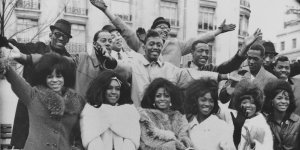
Detroit was one helluva music scene back then!
Longball
Don't forget that Detroit was home to Berry Gordy's Motown Recording Studio and all those Number #1 hits with Diana Ross & the Supremes, Smokey Robinson & the Miracles, Stevie Wonder, the Temptations, the Four Tops, Marvin Gaye, Michael Jackson & the Jackson 5, the Marvelettes, Martha Reeves and the Vandellas, Gladys Knight & the Pips, Lionel Richie, The Commodores, Rick James, Teena Marie, The Isley Brothers, The Spinners, and so many more.
"Who's That Lady" - Ernie Isley, another under-rated guitarist with the Hendrix tones and moves.
Almost forgot it was a photo thread!
Motown recording artists.

Detroit was one helluva music scene back then!
Longball
Fish
2023 COE Winner
Just had Gladys Knight and the Pips play here in Auckland last night!Detroit was one helluva music scene in the 60's & 70's. I always thought the trend-setting band, MC5, was way under rated. The Stooges - loved Ron Asheton's distortion-drenched guitar sound. Another great band torn apart by drug abuse.
Don't forget that Detroit was home to Berry Gordy's Motown Recording Studio and all those Number #1 hits with Diana Ross & the Supremes, Smokey Robinson & the Miracles, Stevie Wonder, the Temptations, the Four Tops, Marvin Gaye, Michael Jackson & the Jackson 5, the Marvelettes, Martha Reeves and the Vandellas, Gladys Knight & the Pips, Lionel Richie, The Commodores, Rick James, Teena Marie, The Isley Brothers, The Spinners, and so many more.
"Who's That Lady" - Ernie Isley, another under-rated guitarist with the Hendrix tones and moves.
Almost forgot it was a photo thread!
Motown recording artists.
View attachment 84327
Detroit was one helluva music scene back then!
Longball
longball
'21, '23 COE Winner
Just had Gladys Knight and the Pips play here in Auckland last night!
Wow! Didn't imagine they were still touring since the 60's! And not just a Tour Bus ride to the next city. That's about as far on Earth from Detroit that you can get! They're some hardcore entertainers.
Longball
CanaViper
Well-known member
From my gym yesterday...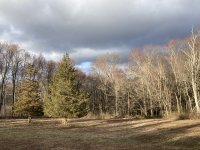
The old man that yells at clouds…
I went outside to walk and it was raining
But whatever, I like the rain.
I started to the park and the sun came out strong, the welcoming trees,
streams and all the life just bustin out.
It’s nice to be…
The old man that yells at clouds…
/steve

The old man that yells at clouds…
I went outside to walk and it was raining
But whatever, I like the rain.
I started to the park and the sun came out strong, the welcoming trees,
streams and all the life just bustin out.
It’s nice to be…
The old man that yells at clouds…
/steve









